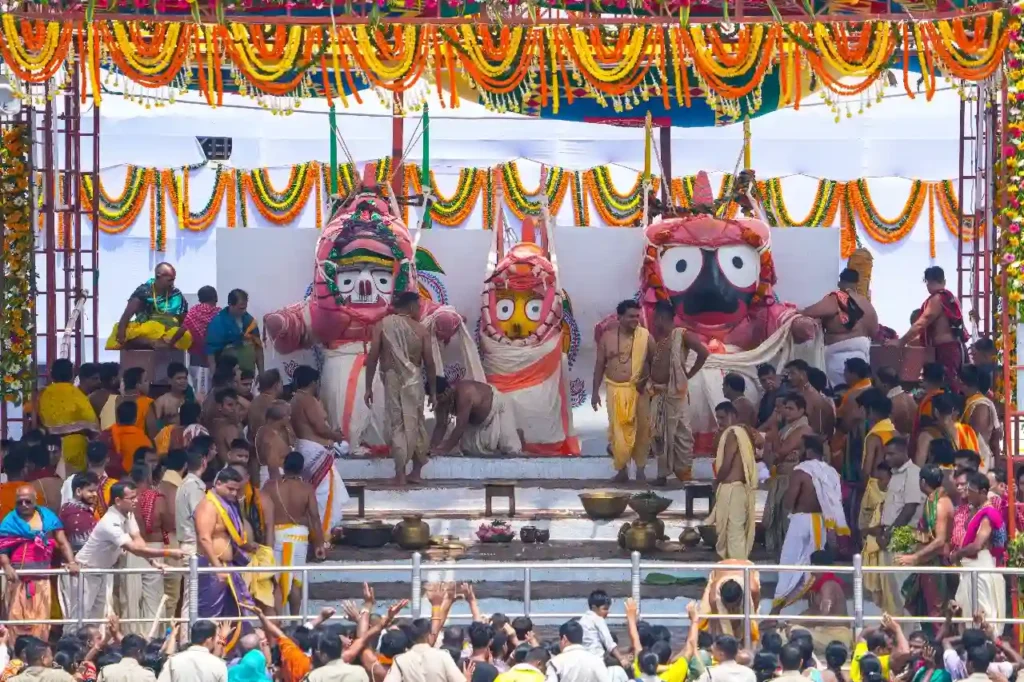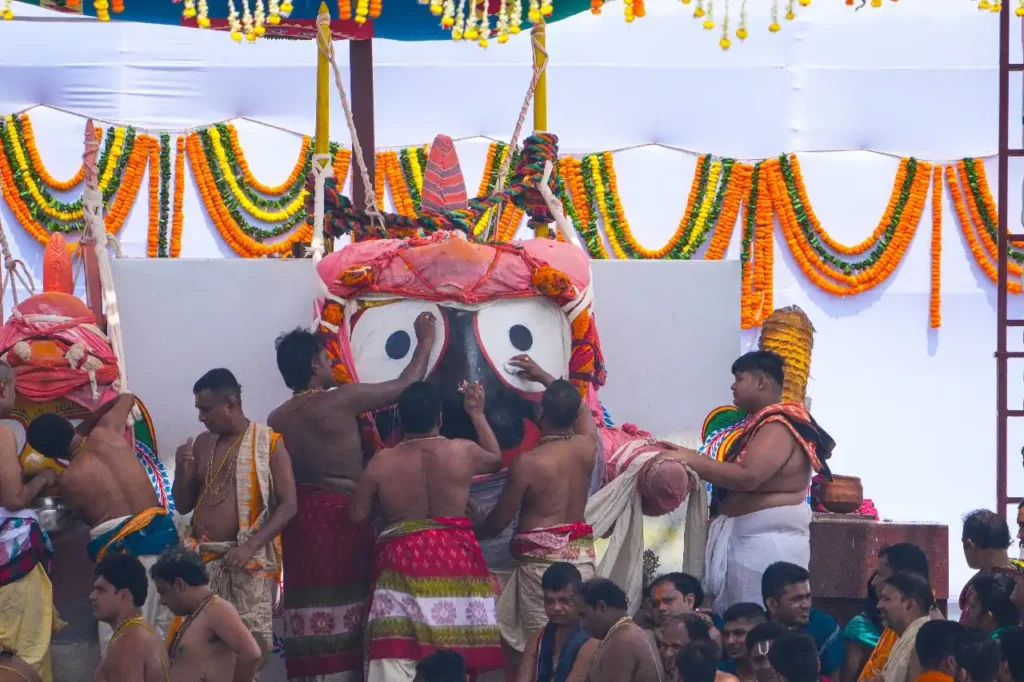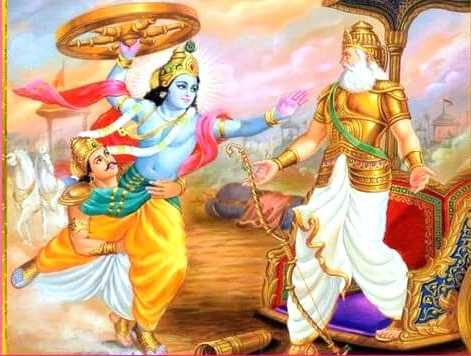Firstly, India, with its tapestry of traditions and rituals, celebrates every religious occasion with unparalleled devotion. Among these, one spiritually rich and culturally significant festival is Snana Purnima (also known as Devasnana Purnima), the grand bathing festival of Lord Jagannath in Puri, Odisha. Notably, this marks the divine beginning of the famous Rathyatra.
Furthermore, let’s dive into the rituals, mythological roots, and religious significance of this ancient tradition that, ultimately, binds millions of devotees in spiritual ecstasy.What is Snana Purnima?
Snana Purnima celebrates the ceremonial bathing of Lord Jagannath, Balabhadra, Subhadra, and Sudarshan on the full moon day of the Jyestha month (May–June). Significantly, devotees consider this sacred ritual the birthday of Lord Jagannath and recognize it as the first major event before the Rath Yatra.
Moreover, priests bathe the deities with 108 pots of sanctified water on the Snana Vedi (bathing altar) inside the Jagannath Temple. Importantly, devotees of all castes and creeds attend the event, which symbolizes universal inclusivity – hence they also call the festival Patita Pavan Lila.

Historical Significance of Devasnana Purnima
According to Skanda Purana, Kapila Samhita, and other scriptures, this ritual was conducted by King Indradyumna when Lord Jagannath (Daru Brahma) assumed form. As there was no bathing platform at that time, the ritual came to be known as Manchsnan (bathing on a wooden stage).
In continuation of this tradition, 108 golden pots filled with water infused with sacred herbs like Ashtagandha, Krishna Aguru, and Devadaru are used. As a result, this occasion is revered as the Adya Lila (first divine act) of Lord Jagannath.
Rituals Performed on Snana Purnima
Ritual Preparation – A Day Before the Snana
- Priests complete rituals like Abkasha Niti, Gopal Ballav Puja, and Morning Dhupa.
- Servitors prepare to carry out the Pahandi Bije (ceremonial procession of the deities).
- They tie the Chaurmal and place Tahiyas (crown-like headgear) on the deities.
Collection of Holy Water
- 108 golden pots filled with holy water from Golden Well near Shitala Devi.
- Mixed with fragrant and medicinal herbs to create mahoshadhi jal.
The Divine Bath
Priests sprinkle water in specific amounts for each deity:
- Jagannath – 35 pots
- Balabhadra – 33 pots
- Subhadra – 22 pots
- Sudarshan – 18 pots
Gajanan Besha – The Elephant Avatar
- After the bathing ritual, priests dress the deities in Gajanan (Elephant) attire, introduced in 1432 AD.
- Meanwhile, priests from Raghavadas Math adorn Subhadra with flowers, moons, and umbrellas.
- Additionally, priests from Gopalatirtha Math decorate Balabhadra and Sudarshan.
Post-Snana Ritual – Anasara Period
- Consequently, Daitapatis and Pati Mahapatra Sevaks care for the deities.
- Simultaneously, worshippers offer prayers to Patti Dian (Vasudeva, Narayan, Bhubaneswari).
- Moreover, devotees visit the Alarnath Temple in Brahmagiri, believing that darshan there equals the merit of seeing Jagannath himself.
Connection with Jagannath Rathyatra
People Also Ask – Answering Top Queries
Why is Snana Purnima celebrated?
How many pots of water do priests use in Devasnana Purnima?
What happens after the Snana Yatra?
What is the significance of Gajanan Besha?
Can devotees witness the Snana Purnima rituals?
Final Thoughts – A Divine Dip into Devotion
Ready to Witness? Are you ready to witness one of the most mystical and ancient traditions of India? Plan your spiritual journey to Puri this Snana Purnima and become part of an unbroken ritual dating back thousands of years.
Stay Connected Stay connected with us to know the exact 2025 dates, travel tips, and Rathyatra updates.
Share Your Experience Don’t forget to share your spiritual experience with the hashtag #SnanaPurnima2025.
Let Lord Jagannath’s divine bath cleanse your soul and lead you toward inner peace.
Jai Jagannath!


